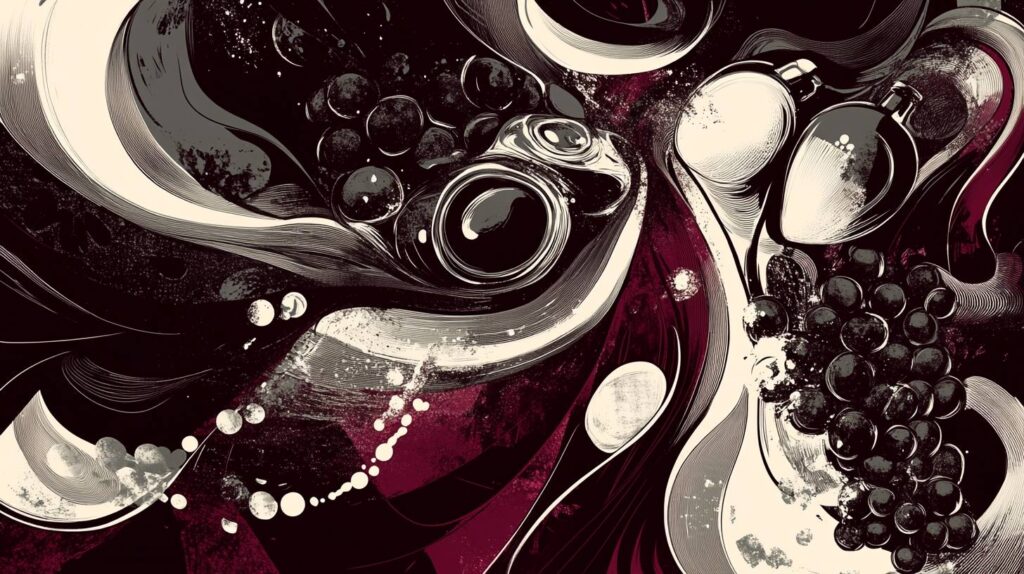When it comes to the world of wines, Port and Vermouth stand out as two unique beverages, each with a rich history and a distinct flavour profile. This article aims to delve into the nuances of these iconic wines, exploring their types, flavour profiles, ideal pairings, production processes, and historical backgrounds. Whether you’re a wine aficionado or a curious beginner, understanding the differences and similarities between Port and Vermouth can enhance your appreciation of these classic drinks.
Types of Port and Vermouth

Port and Vermouth are not monolithic entities; each comes in various types that cater to different palates.
Port wine, originating from Portugal, primarily comes in styles like Tawny, Ruby, White, and Vintage. Each type offers a unique taste, from the rich and fruity Ruby to the complex and nutty Tawny.
On the other hand, Vermouth, with its roots in Italy and France, is mainly divided into sweet (rosso) and dry (bianco) varieties.
While sweet Vermouth is known for its rich, spicy flavour, dry Vermouth offers a more herbal and bitter profile. Understanding these types helps in appreciating their distinct characteristics.
Flavor Profiles
The flavor profile of Port and Vermouth is where they truly distinguish themselves. Port is generally richer and sweeter, often exhibiting notes of chocolate, berries, and spice. It’s a dessert wine that leaves a lasting impression on the palate. Vermouth, conversely, is more versatile in cocktails due to its complex blend of botanicals, herbs, and spices. Its flavour can range from sweet and floral in the case of sweet Vermouth to dry and bitter with dry Vermouth. These contrasting flavour profiles are key to their distinct identities in the world of wines.
Wine Pairings
Pairing wines with food is an art, and both Port and Vermouth have their unique pairings that enhance their flavours. Port, especially richer varieties like Vintage or LBV (Late Bottled Vintage), pairs wonderfully with strong cheeses and decadent desserts. Its sweetness complements the saltiness of cheese and the richness of desserts. Vermouth, with its herbal and spicy notes, pairs well with a variety of appetizers, including seafood, olives, and light cheeses. It’s also a staple in cocktails, bringing a complex layer of flavours to classic drinks like the Martini or Manhattan.
Production Process
The production processes of Port and Vermouth are as unique as their flavours. Port is a fortified wine, meaning it has distilled grape spirit added to it, which stops the fermentation process and retains a higher sugar content. This process also contributes to Port’s higher alcohol content compared to most wines. Vermouth, on the other hand, is a type of aromatised wine, fortified and infused with various botanicals, herbs, and spices. The exact recipe varies between producers, but common ingredients include wormwood, cloves, cinnamon, and citrus peel.

Historical Background
Innovative ways in which contemporary mixologists are incorporating Port and Vermouth into modern cocktails
- Port as a Base in Cocktails: Traditionally used as a modifier, Port is now often used as the primary base in cocktails. For example, replacing whiskey with Port in a Manhattan-style cocktail adds a rich, fruity depth and decreases the alcohol content, making it more approachable.
- Vermouth in Low-Alcohol Cocktails: With the rising popularity of low-alcohol or “session” cocktails, mixologists are using Vermouth as a base due to its lower alcohol content compared to spirits. This results in lighter, more refreshing drinks that are especially popular for daytime or brunch settings.
- Herbal and Spiced Cocktails with Vermouth: The complex herbal and spice notes in Vermouth make it ideal for creating cocktails with a botanical twist. Mixologists are crafting drinks that emphasize these flavours, pairing Vermouth with ingredients like elderflower, lavender, or unusual bitters to create unique taste experiences.
- Port in Dessert Cocktails: Port’s rich, sweet profile makes it an excellent ingredient for dessert cocktails. Mixologists are blending Port with ingredients like chocolate liqueurs, cream, or vanilla, creating indulgent after-dinner drinks that double as a dessert.
- Reviving Classic Cocktails with a Twist: Classic cocktails like Negronis or Martinis are being revisited with Port and Vermouth playing a starring role. By adjusting the ratios or adding a splash of Port to a Negroni, or swapping traditional Vermouth for an artisanal variant in a Martini, mixologists are breathing new life into these timeless recipes.
- Seasonal and Local Flavours: Some bartenders are infusing Port and Vermouth with local or seasonal ingredients, like autumnal spices or summer fruits, to add a unique twist and tie the drink to a specific time and place.
Port Wine Negroni Recipe
- 30 ml Port Wine (Ruby or Tawny)
- 30 ml Gin
- 30 ml Campari
- Ice
- Orange peel for garnish
- Combine Ingredients: In a mixing glass, combine the Port Wine, gin, and Campari. Add ice to the glass.
- Stir Well: Stir the mixture well for about 30 seconds. This helps to blend the flavors while chilling the drink.
- Strain into Glass: Strain the mix into a chilled old-fashioned glass filled with fresh ice cubes.
- Garnish: Garnish with a twist of orange peel. The citrus aroma complements the rich and fruity notes of the Port.
- Port Wine adds a unique twist to the classic Negroni. Its rich, fruity flavors of berries and plums, along with its inherent sweetness, balance the bitterness of Campari and the herbal notes of gin.
- The choice between Ruby and Tawny Port can alter the cocktail’s profile: Ruby Port contributes vibrant fruitiness, while Tawny Port offers a more nuanced, slightly nutty character.








